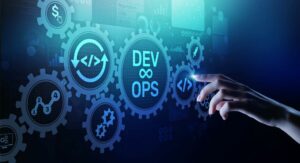Content
- Get Started with Accurate for Your Continuous Monitoring Needs
- Which monitoring tool can be used to implement continuous monitoring?
- Why is continuous security monitoring important?
- Continuous Health Monitoring in Home Healthcare Industry
- What is the process of continuous deployment?
- Healthy Care
- Monitor Your Entire Application with
- PLATFORM
Our platform gives you insight into your threat landscape, empowering you to protect your business from a motivated attack. Reduced system downtime also reduces the negative impact on customer experience, protecting the company from financial and credibility losses. As previously indicated, Continuous Monitoring solutions may be used to track user reactions to software upgrades, which is beneficial to a variety of departments, including development, QA, sales, marketing, and customer service. By automatically collecting and analysing data to reflect possible outages and critical trends, continuous monitoring provides DevOps teams with clarity on the state of the IT infrastructure.
In order to provide an environment built on trust, you may want to consider implementing a self-reporting policy as well. This will allow your employees to come to you with any recent arrests or other acts that warrant reporting. It’s essential that your employees understand your business policy and that it is their responsibility. Choosing to employ internal policies and practices for continuous monitoring will help ensure the safety and integrity of your workplace, for your employees and your customers.
Get Started with Accurate for Your Continuous Monitoring Needs
By monitoring behaviour in your systems 24 hours a day, seven days a week and 365 days a year, you reduce the time delay between a threat being detected and any action being taken. The constant snapshots of real-time activity provide you with one of the best ways to spot a malicious user. For instance, they use technology to complete important transactions and businesses. Therefore, it increases the chances of being cyber-attacked. While certain organizations can use more unique M&E tools, all organizations need some kind of monitoring and evaluation system.

The ultimate purpose of continuous monitoring is not to collect data from throughout the IT infrastructure. Every phase of the DevOps process requires feedback and assessment. In order for assessments to be effective, collected data must be https://globalcloudteam.com/ evaluated on a regular basis so that operations analysts and developers can measure and track security, operations, and business-related issues. Your business focus, functions, and goals will determine how you adopt continuous monitoring.
These attackers are looking for financial and critical national information and they are determined to create widespread disruption if necessary. Provided that, it helps them respond quickly to cyber threats and compromises. As a leading provider of automated healthcare workforce screening solutions, we have the extensive knowledge and best in-class solutions to optimize your screening experience.
Which monitoring tool can be used to implement continuous monitoring?
With M&E tools like surveys, they’re only truly useful if they include a wide range of people and responses. In good monitoring and evaluation plans, all voices are important. Real-time continuous monitoring of Home Security to protect against outside threats. Real-time continuous continuous monitoring strategy monitoring of Rail system controls to ensure maximum safety and minimum human-led error. Cyber security should be considered as a business decision. Informer can help you build an optimum risk-management strategy to face modern threats and secure your digital environment.

Certainly there are many benefits to advice for implementing real-time continuous monitoring. If you are in an industry that makes use of IT, engineering or machinery, real-time continuous monitoring is definitely worth looking into. Collecting data just for the sole purpose of collecting data is a worthless exercise and a timewasting activity. Catching risks and issues in time, is a result of good risk-management, proactive data collection, proper protocols and controls, and an intelligent real-time continuous monitoring program. Hence, CSM is often used and is strongly encouraged in risk management processes as a pre-emptive measure.
Why is continuous security monitoring important?
If an employee is charged with criminal offenses, fraud, or other concerning activities while employed, it’s imperative for your organization to know. Continuous monitoring can help employers stay informed and help prevent fines, penalties, lawsuits, and more. Real-time continuous monitoring of auditing systems to minimize financial risk and compliancy.
- Continuous monitoring gives you a clear picture of the current state of the application and helps you make better decisions to address issues as soon as they happen.
- For example, an employer may need to further assess a healthcare worker who was arrested for a violent crime or sexual assault after being hired.
- The National Cyber Security Centre warns failure to monitor systems could lead to attacks going unnoticed which can have the knock-on result of making you non-compliant with legal or regulatory requirements.
- It’s clear that the organization must take steps for security.
- SIEM is short for Security Information and Event Management.
- This includes things like data centres, networks, hardware, software, servers, and storage.
It is more accurate compared to audits because it allows you to monitor frequently, which keeps track of any changes in an application or infrastructure. The assessment of learning outcomes provides objective evidences necessary in the decision making process in education. Continuous assessment is a classroom strategy implemented by teachers to ascertain the knowledge, skills and understanding attained by students at a particular point in time.
Continuous Health Monitoring in Home Healthcare Industry
Continuous monitoring, also known as ConMon or Continuous Control Monitoring , gives security and operations analysts real-time data on the entire health of IT infrastructure, including networks and cloud-based applications. Where security monitoring helps, is in the way compliance is measured or audited. If you don’t have records of activity relating to the security controls in place, you won’t have the evidence to prove you’re doing it – a common compliance failing.

Without centralised oversight and an agreement with the business as to what constitutes a significant threat, this work can be overwhelming, particularly if you have a small IT team. Atatus – It provides comprehensive transaction diagnostics, performance control, root-cause diagnosis, server performance, and transaction tracing all in one location. Monitors the performance of deployed software using metrics such as uptime, transaction time and volume, system responses, API responses, and the back-end and front-end’s overall stability.
What is the process of continuous deployment?
Research (Dochy & McDowell, 1997) has indicated that continuous assessment has a greater learning effect than does test only at the end of the learning process. The problem is businesses tend to lack the awareness or resources to realise that they are under attack until they receive the ransom notice or their data is posted on the dark web. By constantly monitoring your systems, you have a much better chance of limiting the damage in the first phase of an attack. Given the increase in cyber threats and the rise in tech-savvy, sophisticated criminal gangs, the ability to be able to detect incidents before they cause serious damage, and take effective action quickly, is vital.
Under the CMS, hospitals, and health systems are prohibited from affiliating with individuals and groups convicted or suspected of committing fraud. The Health and Human Services Department’s Office Inspector General also prohibits healthcare organizations from hiring any sanctioned from federal programs such as Medicaid or convicted of certain crimes. Real-time continuous monitoring of water systems to minimize pollution. As a proactive threat intelligence approach to cyber security, CSM is becoming progressively popular amongst forward-looking organizations all over the world. Consistent system monitoring and timely, appropriate warnings assist in maintaining system uptime by raising the alarm when a service outage or application performance issues occur. It is also crucial that your policy around monitoring is documented in a clear, thorough manner and is communicated to your employees.
Integrating Authomize ITDR with Microsoft Sentinel SIEM – Security Boulevard
Integrating Authomize ITDR with Microsoft Sentinel SIEM.
Posted: Tue, 08 Nov 2022 08:00:00 GMT [source]
Costs of implementation seem prohibitive because people think that every control needs to be monitored. To be fair, addressing all controls would be quite a challenge and it would take years to see ROI. Successful implementations use an agile strategy to focus on areas that will show value quickly. The focus should be on achieving smaller results in areas that are both high risk and high value. By undertaking an assessment, prioritizing and narrowing the scope, it’s easier to focus on designing a workflow template that can be replicated as you add new deployments.
Continuous monitoring and observability can be regarded as the DevOps pipeline’s final phase. This is one of the most important aspects of the DevOps lifecycle, as it will aid in genuine efficiency and scalability. CCMs make it easy to simplify workflows that manage alarms, communicate to the board, investigate alerts, and remediate or mitigate the control weaknesses. Security teams are tasked with the job of assuring that business risks are securely managed and that appropriate security controls are in place and functioning well. When your team ishandling many bugs at once, it puts pressure on them.
Healthy Care
With continuous monitoring, they can focus on other more important things that are related to the application or infrastructure. This way, they can do their job better, more efficiently, and give them enough time to spare for other tasks. Continuous monitoring aims to identify performance inconsistencies and error sources. It also resolves these problems using relevant solutions to safeguard the enterprise. Continuous monitoring assists companies in keeping a tab of their user experience. The alternative is to use a managed service from a trusted third party.
Monitor Your Entire Application with
The information collected through monitoring reveals gaps or issues, which require resources to address. Without M&E, it wouldn’t be clear what areas need to be a priority. Resources could easily be wasted in one area that isn’t the source of the issue. Contact our team or click the link to learn more about our continuous monitoring solutions today. Continuous background checks can help ensure that your healthcare organization won’t have to face large fines or penalties by employing sanctioned or excluded employees.
Real-time continuous monitoring of security infrastructures to maximize defense against cyber threats. Continuous monitoring can also be used by IT companies to track user behaviour, particularly in the minutes and hours after a new application update. IT operations teams can employ continuous monitoring tools to see if the upgrade had a good or negative impact on user behaviour and the overall customer experience.
PLATFORM
Moreover, they must always uphold the confidentiality, integrity, and availability of data. Monitoring and evaluation can help fuel innovative thinking and methods for data collection. While some fields require specific methods, others are open to more unique ideas.
Specifically, auto-remediation, especially for malware on end-points, was widely discussed. This was likely inspired by incidents like Target, where they had a very good, leading edge anti-malware technology, and the issue was detected, but they did not have the auto-remediation turned on. Their explanation was that the technology was so brand new, they did not yet feel comfortable turning on that part of the system. Now we are getting closer to the heart of the problem – not the technology, but the processes, people, and culture behind it.

